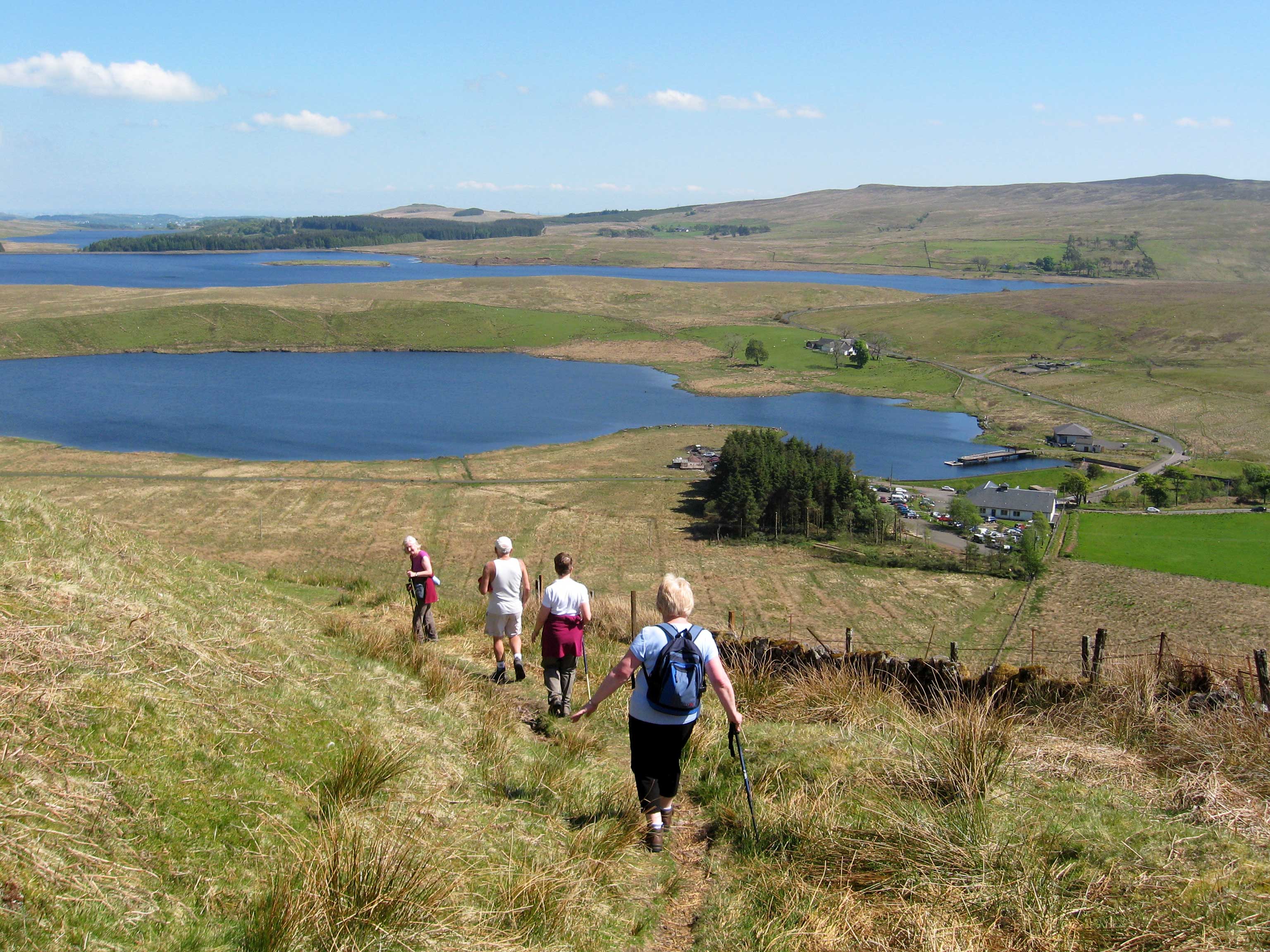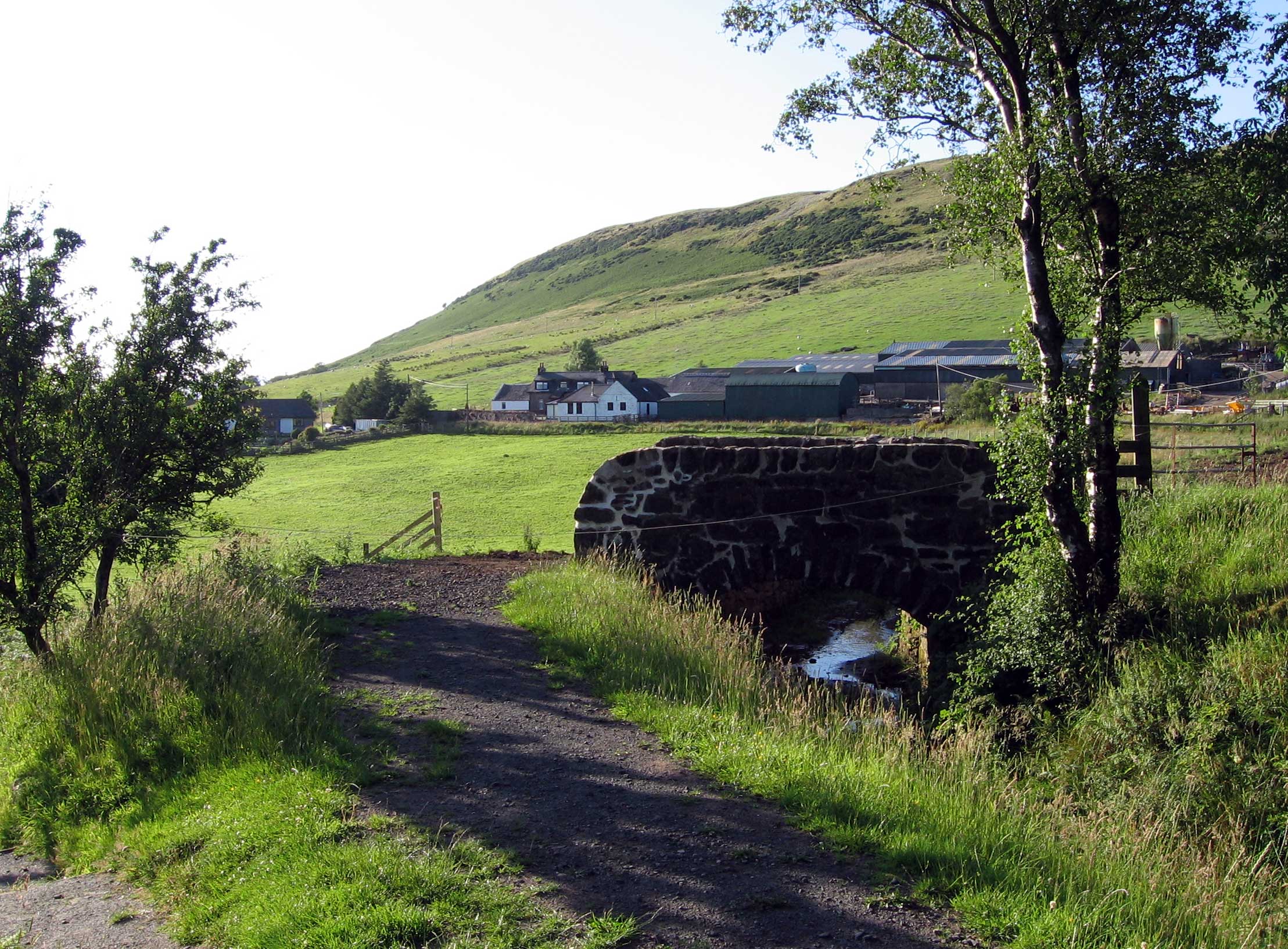Loch Thom on:
[Wikipedia]
[Google]
[Amazon]




 Loch Thom is a
Loch Thom is a
Clyde Muirsheil
includes sections on Cornalees and Greenock Cut
Inverclyde Council – WalkingParks and Outdoor AttractionsMountain bike routesLoch Thom Documentary
A short documentary looking into the history of Loch Thom {{authority control Thom Protected areas of Inverclyde




 Loch Thom is a
Loch Thom is a reservoir
A reservoir (; ) is an enlarged lake behind a dam, usually built to water storage, store fresh water, often doubling for hydroelectric power generation.
Reservoirs are created by controlling a watercourse that drains an existing body of wa ...
which since 1827 has provided a water supply to the town of Greenock
Greenock (; ; , ) is a town in Inverclyde, Scotland, located in the west central Lowlands of Scotland. The town is the administrative centre of Inverclyde Council. It is a former burgh within the historic county of Renfrewshire, and forms ...
in Inverclyde
Inverclyde (, , , "mouth of the Clyde") is one of 32 council areas used for local government in Scotland. Together with the East Renfrewshire and Renfrewshire council areas, Inverclyde forms part of the historic county of Renfrewshire, which ...
, Scotland
Scotland is a Countries of the United Kingdom, country that is part of the United Kingdom. It contains nearly one-third of the United Kingdom's land area, consisting of the northern part of the island of Great Britain and more than 790 adjac ...
. It is named after the civil engineer
A civil engineer is a person who practices civil engineering – the application of planning, designing, constructing, maintaining, and operating infrastructure while protecting the public and environmental health, as well as improving existing i ...
Robert Thom who designed the scheme which created the reservoir and delivered water via a long aqueduct known as ''The Cut''. Today, as well as providing a water supply, the loch is used for sport fishing and forms part of the Clyde Muirshiel Regional Park
Clyde Muirshiel Regional parks of Scotland, Regional Park is the collective name for areas of countryside set aside for conservation and recreation on the South River Clyde, Clyde estuary in Scotland.
The park covers an area of of Inverclyde, N ...
with several attractive walks and a centre at Cornalees Bridge providing nature study facilities.
The loch is about 2.4 km from north to south, curving to the east in a rough C-shape, and is at an elevation of about 195 m above sea level. From the northern arm an outlet feeds southwest a short distance to a compensation reservoir at the centre of the "C", which then connects at Cornalees Bridge to the start of ''The Cut''.
History
In the late 18th century Greenock was a rapidly expanding seaport with industries developing as theIndustrial Revolution
The Industrial Revolution, sometimes divided into the First Industrial Revolution and Second Industrial Revolution, was a transitional period of the global economy toward more widespread, efficient and stable manufacturing processes, succee ...
gathered pace. Its location on the north slopes of hills sweeping down to the south bank of the Firth of Clyde
The Firth of Clyde, is the estuary of the River Clyde, on the west coast of Scotland. The Firth has some of the deepest coastal waters of the British Isles. The Firth is sheltered from the Atlantic Ocean by the Kintyre, Kintyre Peninsula. The ...
meant that several fast flowing streams provided supplies, and a number of wells provided clean water for domestic use. This was supplemented in 1773 by a piped water system designed by James Watt
James Watt (; 30 January 1736 (19 January 1736 OS) – 25 August 1819) was a Scottish inventor, mechanical engineer, and chemist who improved on Thomas Newcomen's 1712 Newcomen steam engine with his Watt steam engine in 1776, which was f ...
supplying some areas, but there was increasing demand for water powered mills.
On the far side of the hills to the south of the town a natural dip held a freshwater lake known as ''Shaws Water'' at a level high above the town. The civil engineer Robert Thom from Rothesay
Rothesay ( ; ) is the principal town on the Isle of Bute, in the council area of Argyll and Bute, Scotland. It lies along the coast of the Firth of Clyde. It can be reached by a Caledonian MacBrayne ferry from Wemyss Bay, which also offers an ...
prepared a scheme to turn this into a reservoir and create the aqueduct which became known as ''The Cut''.
The ''Shaws Water Joint Stock Company'' named by Sir Michael Shaw Stewart, 5th Baronet
Sir Michael Shaw-Stewart, 5th Baronet ( Stewart-Nicholson; 10 February 1766 – 3 August 1825). Lord Lieutenant of Renfrewshire between 1822 and 1825.
Early life
He was the son of Houston Stewart-Nicholson (d. 1812) and grandson of Sir Michael St ...
and friends, which was incorporated on 10 June 1825 with capital of £30,000. The scheme was officially opened on 16 April 1827. On that day a grain mill, paper mill, power loom manufactory and a sugar refinery made use of the power from the water running north down to the sea for a vertical height of around 170 m, at a rate of about of water per day. In 1845 ''The Kelly Cut'' was constructed to bring more water to Loch Thom from the south. Numerous other mills were added in Greenock to make use of the supply, including what became ''The Merino Mills'' weaving woollen cloth, and a mill grinding clay for a local pottery works. A drought caused the reservoir to run dry in 1852 stopping work at the factories that relied on it.
The water supply proved inadequate for growing domestic demand, and in 1872 another reservoir was created immediately to the east of Loch Thom at Gryffe Reservoir
The Gryffe Reservoirs, also spelled 'Gryfe', take their name from the River Gryffe, name deriving from the Gaelic ''garbh'' meaning "rough stream". are two reservoirs, known as Gryffe No. 1 and Gryffe No. 2, located in Inverclyde in the west centr ...
. Together with thirteen smaller reservoirs nearby they provide almost of water supply in total
Greenock Cut Centre
Loch Thom forms part of Clyde Muirshiel Regional Park, a public organisation aimed at providing countryside access and education. Several nature trails are provided, and the ''Greenock Cut Centre'' adjacent to Cornalees Bridge (which was the centre's former name) provides educational facilities at a ranger base, along with car parking, refreshments and public toilets. Location: .The Cut
From Cornalees Bridge ''The Cut'' runs west then turns northward following along the contour of Dunrod Hill which it follows round until running eastwards directly above the town of Greenock at Overton, having come a distance of . On the way it collects some of the water from streams that cross its path, and a series of sluice gates incorporated an ingenious automatic way of releasing surplus water. As shown in the picture of a restored mechanism, when the aqueduct is over full, water flows down the pipe in the foreground and fills the bucket, which then pulls the chain down over the pulley wheel and lifts the counterweight and the lever opening the sluice gate. Small holes in the bucket allow the water to drain slowly out, so when the inflow stops the counterweight eventually pulls the sluice gate lever down and lifts the empty bucket. The cut provided a water flow to a series of falls running throughwater wheel
A water wheel is a machine for converting the kinetic energy of flowing or falling water into useful forms of power, often in a watermill. A water wheel consists of a large wheel (usually constructed from wood or metal), with numerous b ...
s powering various industrial processes, including a papermill, woollen and cotton mills, ropeworks, several sugar refineries, an iron foundry and shipbuilding works including production of steam engines and boilers.
From its opening, the nearly level footpath formed on the embankment to the downhill side of the aqueduct proved a great attraction, and "walking the Cut" continues to be popular.
Literature
The poet W. S. Graham's later work powerfully evokes his childhood in and around Greenock. In "Loch Thom", included in ''Implements in their Places'', published in 1977, the loch becomes the focus of his memories:The curlew's cry travelling stillGraham, W.S. (2004) ''New Collected Poems'', Faber.
Kills me fairly. In front of me
The grouse flurry and settle.
.
See also
*List of reservoirs and dams in the United Kingdom
This is a list of dams and reservoirs in the United Kingdom.
England Buckinghamshire
*Foxcote Reservoir and Wood, Foxcote Reservoir, north of Buckingham
*Weston Turville Reservoir, between Weston Turville and Wendover
Cambridgeshire
*Grafham Wat ...
References
*External links
Clyde Muirsheil
includes sections on Cornalees and Greenock Cut
Inverclyde Council – Walking
A short documentary looking into the history of Loch Thom {{authority control Thom Protected areas of Inverclyde